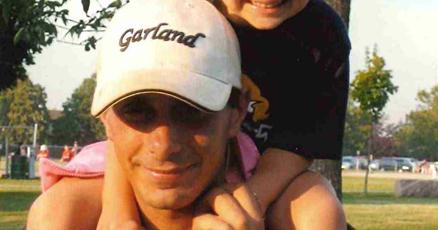Craig Brooks has been found guilty of second-degree murder in the fatal assault of Antonio Beltrano at Hamilton’s J.C. Beemer Park in 2023, concluding a pivotal legal chapter in this high-profile case. The verdict, delivered on April 9, 2025, marks a significant development after a meticulous investigation and trial process, highlighting the role of forensic science and witness testimonies in securing justice.
### Detailed Investigation and Trial Process
The investigation into the murder of Antonio Beltrano began in earnest following the shocking incident on May 14, 2023, at J.C. Beemer Park in Hamilton. Beltrano was found unconscious with severe head injuries and was pronounced dead shortly after emergency personnel arrived at the scene. The Hamilton Police launched an extensive investigation, employing advanced forensic techniques to gather crucial evidence.
Forensic experts played a pivotal role by analyzing DNA samples, surveillance footage, and digital records, which ultimately linked Craig Brooks to the scene of the crime. Investigators meticulously examined available footage from nearby cameras, which provided crucial time-stamped evidence of Brooks’ presence at the park during the critical time frame.
### Witness Testimonies and Legal Proceedings
Throughout the trial, a combination of forensic evidence and witness testimonies bolstered the prosecution’s case. Several eyewitnesses testified, recounting their observations of an altercation between Brooks and Beltrano, which escalated to violent levels. One significant testimony came from Lisa Hartman, a local resident, who described seeing Brooks striking Beltrano during the confrontation.
The defense argued that the incident was a tragic accident, highlighting Brooks’ lack of premeditated intent. However, the prosecution effectively countered by demonstrating a pattern of aggressive behavior exhibited by Brooks in the hours leading to the incident. Key evidence included text messages and phone records, which painted a comprehensive picture of Brooks’ state of mind.
### Implications of the Verdict
The jury’s decision, reached after deliberating for over two days, reflects the rigorous evidentiary standards upheld throughout the legal process. Legal analyst Peter Dawson remarked, “The verdict underscores the importance of detailed forensic work and the courage of witnesses willing to testify.”
This case has captivated the local community, prompting discussions on park safety and measures to prevent similar occurrences in public spaces. Hamilton authorities have since increased security measures in public parks, including the installation of additional surveillance systems and patrols to enhance public safety.
### Community Reactions and Future Proceedings
The family of Antonio Beltrano expressed relief and gratitude for the justice served, with his sister Maria Beltrano stating, “We appreciate the hard work of the police and the dedication of the legal team who worked tirelessly for this outcome.”
The conviction of Craig Brooks serves as a notable example of the intersection between technology and traditional investigative methods in modern criminal justice. Sentencing is scheduled for June 15, 2025, where Brooks faces a potential life sentence, reflecting the serious nature of the charge and the impact on the victim’s family.
Legal experts suggest that this case may set a precedent for future trials involving complex investigatory techniques, underscoring the evolving landscape of criminal justice in Canada.
Conclusion:
The conviction of Craig Brooks for the second-degree murder of Antonio Beltrano reflects the culmination of a comprehensive investigative and judicial process that has deeply resonated within the Hamilton community. Through the meticulous collection of forensic evidence and compelling witness testimonies, justice has been served, offering a degree of closure to Beltrano’s family. This case has highlighted the critical role of advanced forensic science and diligent police work in modern criminal investigations, setting a potential precedent for future legal proceedings. As the community continues to deal with the aftermath of this tragic event, the increased focus on public safety measures offers some reassurance that similar incidents may be prevented in the future. With sentencing set for June, the case underscores both the gravity of the crime and the complexities of the justice system, while paving the way for continued developments in the use of technology in law enforcement. This verdict not only marks a significant moment for those affected by the tragedy but also for the broader societal discussions about safety, justice, and the power of evidence in achieving accountability.

